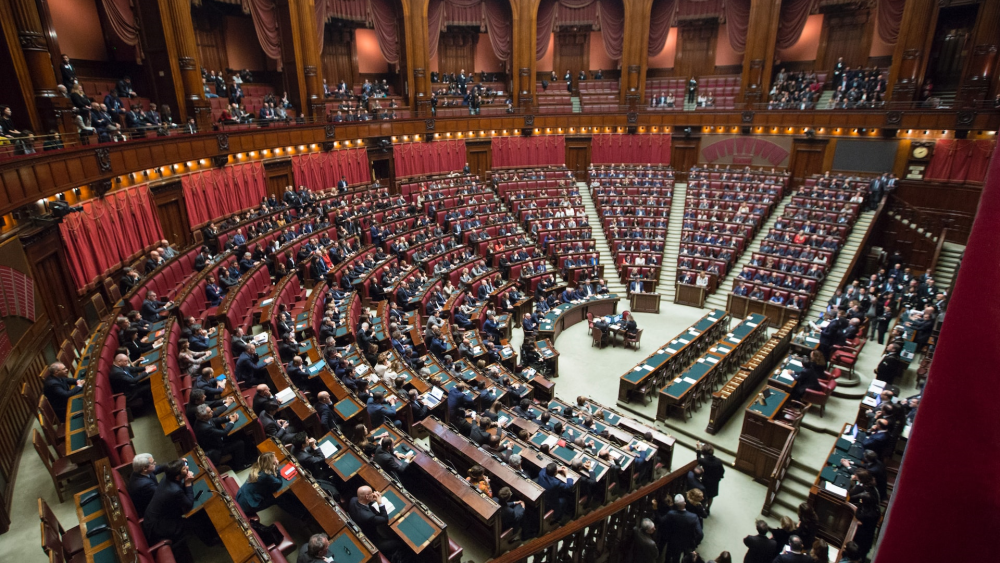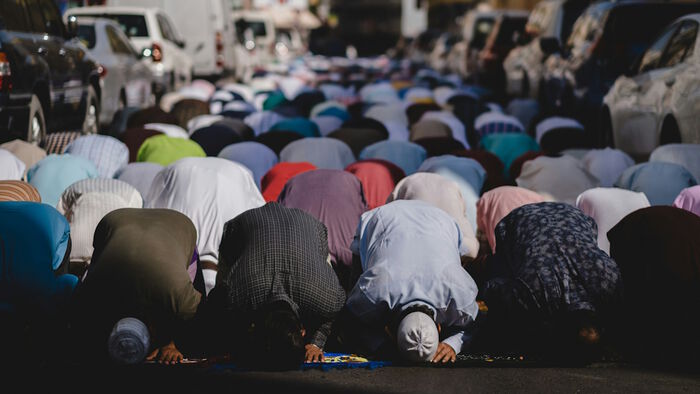On 25 September, Italians will be called to elect a new parliament, following the collapse of Mario Draghi’s national unity government in late July. After a month of campaigning, opinion poll data indicates that the right-wing coalition is on track to win a landslide majority: with about 40-45 per cent of the vote, the right might potentially get a seat share approaching two-thirds. The leading party in the right-wing coalition is indisputably Fratelli d’Italia (FdI), a far-right party that is considered the natural successor of Alleanza Nazionale (AN), the political party that grew out of the neo-fascist Movimento Sociale Italiano in the mid-1990s. Founded in 2012 by its current leader Giorgia Meloni, FdI is now polled at 25 percent (the most popular party in the country) and has doubled the support of its main coalition partners Forza Italia (FI) and Lega. This constitutes a major change compared to 2013 and 2018, when no single party or coalition was able to win a clear majority. But are the upcoming general elections really a turning point for the political right in Italy? We argue that, despite some important changes in the balance of power between the members of the coalition, its composition, leadership and agenda are pretty much in line with its recent past, which testifies to the seemingly irreversible blending of mainstream and far-right politics in Italy.
Votes will be cast using the “Rosatellum'' electoral system, introduced in 2017: 37 per cent of the seats in each house will be allocated via a first-past-the-post system, and 64 per cent proportionally via fixed lists. Following a constitutional referendum, the size of the chambers will be halved (from 640 to 400 in the lower house, and from 315 to 200 in Senate). |
|---|
The right-wing coalition strikes back
Over the past twenty years, there have been no structural transformations in the composition of Italy’s right-wing coalition, which comprises a liberal, as well as a radical right component. And yet, today the balance of power between its moderate and radical wings has changed considerably.
The 2022 right-wing coalition reproduces the alliance structure that dominated national politics after the implosion of the Italian party system in 1992. While the Mani Pulite (Clean Hands) judicial investigation brought to light a deeply corrupt system binding together politics and businesses, the consequent disintegration of Italy’s main centre-right party Democrazia Cristiana, and the emergence of tycoon Silvio Berlusconi on the political scene, ultimately blurred the distinction between the “liberal”, “conservative” and “populist” components of the political right. Since then, albeit varying in name, size and support, right-wing coalitions always contained three main components: 1) Silvio Berlusconi’s personalistic parties (today, Forza Italia); 2) a relatively small Christian democratic or centrist wing (in 2022, Noi Moderati); and 3) a far-right component comprising Lega Nord (now Lega) as well as the far-right Alleanza Nazionale (and now its successor FdI).
However, the balance of power between these parties has changed. Since the Great Recession and the technocratic juncture of 2011 (the resignation of Silvio Berlusconi as head of government amid an acute debt crisis and the appointment of a technocratic cabinet led by economist Mario Monti), the center-right component has lost the leadership. This was mainly due to Berlusconi’s own judicial problems, the ambiguous positions of his party towards government participation, and the subsequent centrist splits that it suffered. At first, it was Matteo Salvini’s Lega that became the primary right-wing party at the 2018 general elections. Lega did not formally break the right-wing alliance, but first struck a government deal with the M5S (2018-19), and then joined - alongside Forza Italia - Mario Draghi’s national unity government in 2021-22. In this context Giorgia Meloni reaped the rewards of being the sole opposition of the political right, and FdI is now set to be the single largest party in the country.
Thus, at the eve of the 2022 elections the composition of the right-wing coalition is not too different from what it used to be in the late 1990s. In continuity with the process started two decades ago, there is still no strong distinction between mainstream and radical components in Italian politics. But more than ever, the far right has now taken full central stage.
The making of “new” leaders
Second, the leaders of the Italian right - Berlusconi and Salvini - remain pretty much the same as in the past. Whereas Giorgia Meloni has attempted to brand herself as the new face of the coalition, she has decades-long experience in politics, notably including in the far right.
Media tycoon Berlusconi has led his personalistic parties since 1994 and served as prime minister for over fifteen years. Salvini has been federal secretary of Lega since December 2013, deputy prime minister and minister of the interior between 2018 and 2019. In contrast, Giorgia Meloni is often described as the “new face” in Italian politics. Throughout her career, Meloni has used her young age and image as a woman to convey the idea of a radical alternative. Indeed, she is the first female far-right leader in Italy, the first woman leading a major political party, and the first to stand a serious chance of becoming prime minister. She has also been the youngest female MP, and the youngest minister in the history of the country.
And yet, her profile is in other ways the most conventional of the three leaders of the coalition: she started as an activist when she was fifteen years old in the youth branch of the post-fascist Movimento Sociale Italiano (MSI); she then became a party member in AN, and followed the merger of AN with Berlusconi’s mainstream party Popolo della Libertà in 2009. From 2008 to 2011, she was appointed to the Youth and Sport portfolio in Berlusconi’s IV government, before creating her own party in 2012 by bringing back most of the political personnel and ideas of Alleanza Nazionale. Unlike former leader Gianfranco Fini however, she did not distance herself explicitly from the hard-line wing of the party, and strategically combined post-fascist nostalgia (i.e. the reproduction of the symbol of MSI – a tricolour flame - in the logo of the FdI) with models inspired by mainstream conservative parties such as Likud, the Polish Law and Justice, and the US Republicans (i.e. combining liberal economic policies and a roll-back on civil liberties).
In sum, despite presenting herself as a radical alternative and changing the balance of power within the coalition, Giorgia Meloni’s leadership displays pretty conventional traits at the crossroads between mainstream and far-right politics.
Campaigning on the usual suspects
Third, there are no radical changes in the content of the campaign agenda. Rather, the programme of the right has simply been adapted to a transformed internal and international context. As the chances of a right-wing parliamentary majority increase, and with Italy about to receive several billion euros in coronavirus recovery funds, the coalition has muted most criticism against the EU, and brandished its Atlanticist credentials. The defining campaign proposals reflect the ones that have sustained the right-wing alliance in the previous decades, based on neo-liberal tax cuts and pro-business incentives. The main economic proposal is to introduce a flat tax, an idea originally put forth by Silvio Berlusconi, subsequently backed by Lega, and ultimately embraced by FdI too. The three coalition allies also insist on lowering VAT to improve purchasing power and combat inflation, as well as raising limits on the use of cash and labor market reforms. The continuity of the right-wing economic agenda is further demonstrated by the choice of FdI to run with Giulio Tremonti on its list, who has been four-times minister of the economy and finance in the Berlusconi governments. Similarly, the coalition revives its hard-line anti-immigration and law-and-order positions, which cemented the alliance between the mainstream right parties and their far-right allies in the 1990s. This includes a strong emphasis on public and individual security and a grand plan to increase birth rates and the so-called “traditional” family, combined with restrictions of civil rights and the externalization of migration control infrastructure (via hotspots for extra-EU migrants).
However, the right-wing coalition stands more clearly in favor of European Union and NATO membership, as the economic impact of the war in Ukraine looms over Italy and the relationship with Russia becomes more tense. While the EU has been at the core of the campaigns of Lega, FdI, and occasionally even FI, emphasis on this issue has been mainly strategic. None of the parties has come up with concrete plans to quit the eurozone, and their soft euro-scepticism is now toned down to mild proposals to reform the “overly bureaucratic” EU institutional system. Regarding NATO the positions within the coalition have also converged, albeit for different reasons: Berlusconi’s FI and Salvini’s Lega have long been committed to Russia (and Putin), but ultimately condemned the military aggression against Ukraine. Seeking legitimation within the establishment, FdI has promoted a staunchly Atlanticist foreign policy, including a special relationship with the Republican party under Donald Trump, and firm opposition to Russia and China.
Overall, the programme of the right-wing coalition exemplifies the compromise between its mainstream and far-right components: foreign policy, commitment to the EU and a neo-liberal economic agenda serve to assert the coalition’s mainstream credentials and compensate for authoritarian positions on moral and security issues.
For the first time in a decade, the Italian elections may be decisive, and appoint a clear right-wing parliamentary majority. For the first time in Italian history, a woman stands a chance to become prime minister. And for the first time since 1945, the parliamentary majority may be led by a party ideologically rooted in Italian Fascism. And yet, the 2022 general election is no revolution for Italian politics, which testifies to the long-term process of mainstreaming and normalisation of far-right actors and ideas in the country. The composition of the right-wing coalition confirms the predominance of radical parties over moderate ones; its leadership shows that far-right politicians are by now well embedded in the mainstream establishment; and the main issues on the agenda illustrate that some of the key ideas of the far right are now normalised, and deemed “common sense” in public debates. In this respect, the 2022 scenario confirms, and reinforces, the structural blending of mainstream and far-right politics in Italy.
.jpg)

.jpg?alt=listing)


